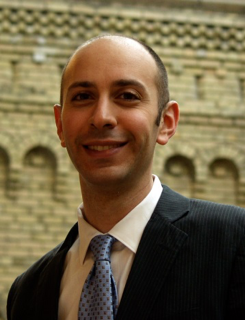Selective Peripheral Nerve Recordings using Spatiotemporal Signatures
The Montreal Chapter of the IEEE Signal Processing (SP) Society cordially invites you to attend the following talk, to be given by Prof. José Zariffa from Toronto Rehabilitation Institute (TRI) - University Health Network (UHN) - and the Institute of Biomaterials and Biomedical Engineering at the University of Toronto, on Tuseday June 19th 2018, from 11h30 to 12h30pm at Concordia University (EV Building, Room 3.309).
Date and Time
Location
Hosts
Registration
-
 Add Event to Calendar
Add Event to Calendar
- 1515 Saint-Catherine St. West
- Montreal, Quebec
- Canada H3G 1M8
- Building: EV-Biulding
- Room Number: 3.309
- Contact Event Host
-
Prof. Arash Mohammadi
Concordia Institute for Information System Engineering (CIISE)
Concordia University,
Montreal, QC, H3G 2W1, Canada
Speakers
 Prof. José Zariffa
Prof. José Zariffa
Selective Peripheral Nerve Recordings using Spatiotemporal Signatures
A neural interface is a channel of communication between the human nervous system and an artificial device. In particular, a peripheral nerve interface operates by recording or stimulating bioelectric activity in the peripheral nervous system. Applications of this technology include enabling amputees to control prosthetic limbs as they would a natural limb, improving the control of functional electrical stimulation systems that can restore motor function to individuals paralyzed after spinal cord injury, and treating a host of chronic diseases through electrical stimulation of targets in the peripheral nervous system. Creating peripheral nerve interfaces that can selectively record from specific neural pathways of interest within a nerve is a major engineering challenge, of fundamental importance to all of the applications listed above. Our research group has approached this problem using multi-contact nerve cuff electrodes. We have shown that characterizing the spatiotemporal variations obtained from these devices during neural activity can lead to improved discrimination, compared to source localization approaches or methods based on conduction velocity. We have demonstrated for the first time that the source of individual, naturally evoked compound action potentials can be classified from nerve cuff recordings. Avenues for future improvements will be also discussed.
Biography:
Dr. José Zariffa is a Scientist at the Toronto Rehabilitation Institute – University Health Network and an Assistant Professor at the Institute of Biomaterials and Biomedical Engineering at the University of Toronto. Dr. Zariffa received his Ph.D. in electrical and biomedical engineering from the University of Toronto. He then completed post-doctoral fellowships at the International Collaboration On Repair Discoveries (ICORD) in Vancouver, Canada, and at the Toronto Rehabilitation Institute. He is a recipient of an Ontario Early Researcher Award. His research interests are in neuroprosthetics and technology for upper limb neurorehabilitation, encompassing work in neural interfaces, wearable sensors, rehabilitation robotics, and electrophysiology.

